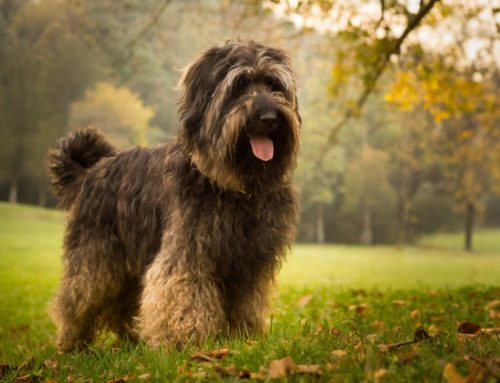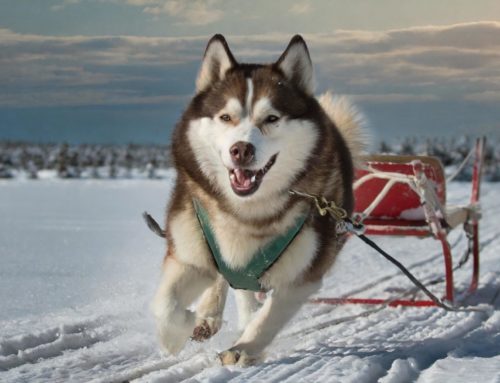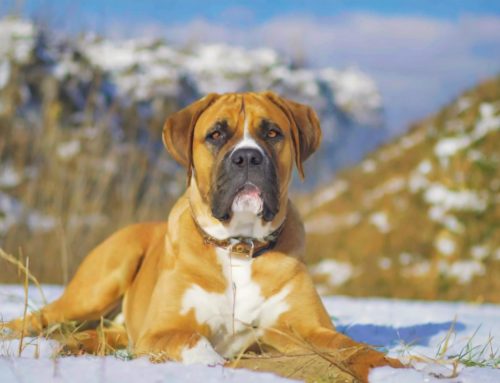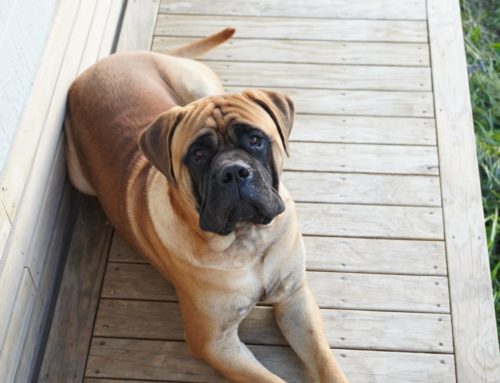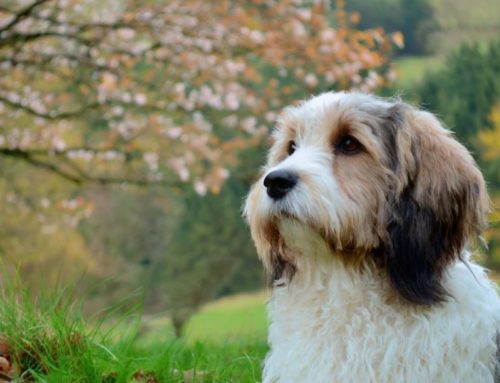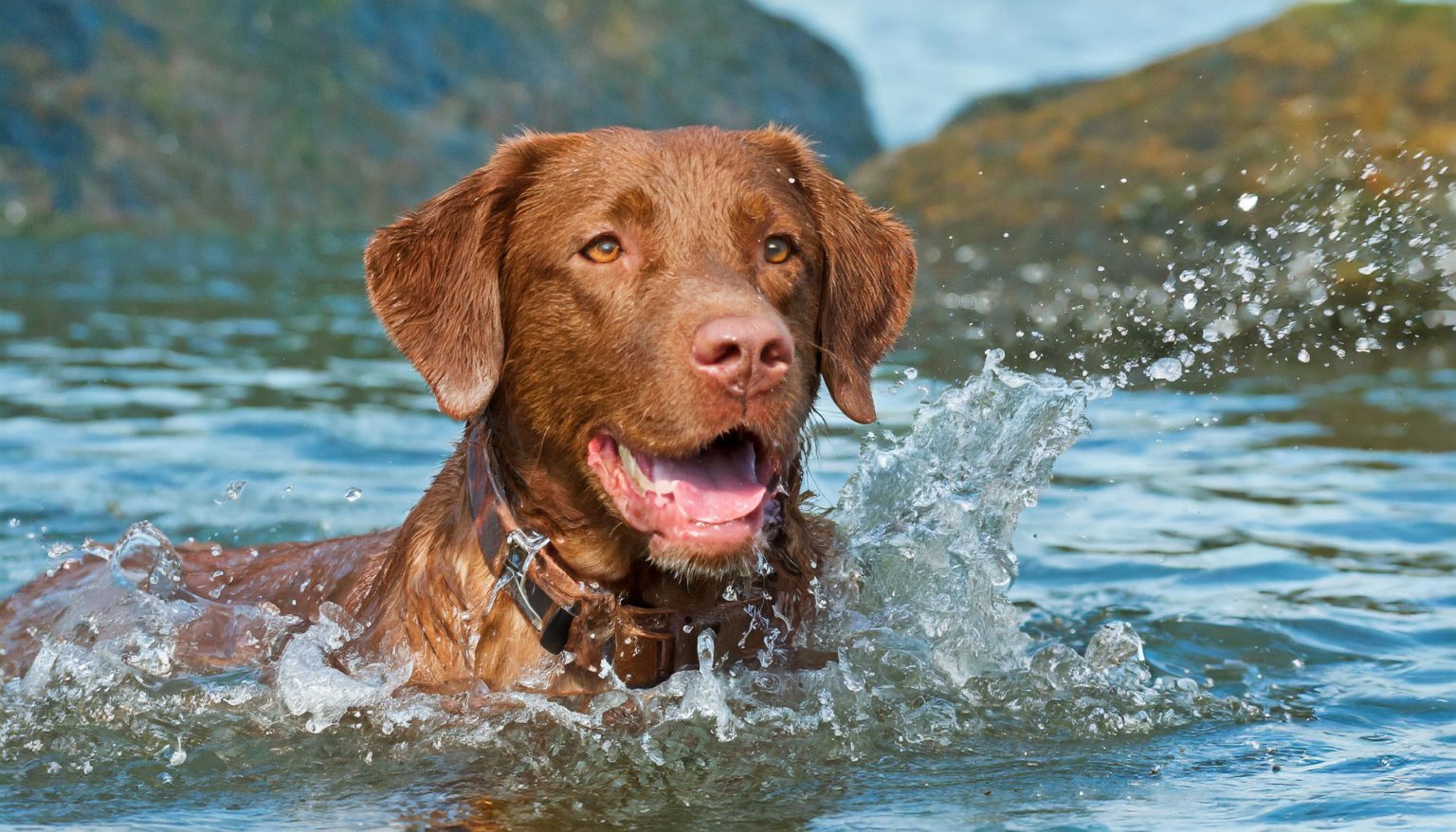
The Chesapeake Bay Retriever, with its unique coat and impressive retrieving skills, has a rich history dating back to 1807 off the coast of Maryland. This dog breed originated when an English ship carrying two Newfoundlanders, a red male and a black female, was shipwrecked.
These dogs were rescued and crossed with local retrievers, including the Flat-Coated and Curly-Coated Retriever, as well as other large-breed water dogs such as the Labrador Retriever and possibly Coonhounds.
This led to the development of a specialised hunting dog, perfectly adapted to the hard work in the icy waters of the Chesapeake Bay, specialising in retrieving water game. The Chesapeake Bay Retriever’s coat is thick and short, with a woolly undercoat and an oily, water-resistant outer coat that ranges from wavy to slightly curly.
This double coat provides protection against cold temperatures and water, essential for their work in cold water. Chesapeake Bay Retrievers need plenty of exercise and are happiest when they have tasks to perform, especially swimming and retrieving.
Throughout their history, these dogs have proven themselves not only as excellent hunting dogs but also as loyal family members. Despite their affectionate nature, they are known for their somewhat reserved manner towards strangers, which makes them watchful pets.
The breed requires regular, but not excessive, brushing to keep the coat in good condition and minimise shedding. The Chesapeake Bay Retriever Club, established to promote and protect the breed, provides valuable information for both breeders and owners.
This breed, recognised by the FCI, remains a popular choice for duck hunting and as a companion dog, provided the dog receives sufficient exercise and mental stimulation to prevent destructive behaviour.
FCI Group 8 Retrievers
The Chesapeake Bay Retriever is a member of Group 8 of the Fédération Cynologique Internationale (FCI), which includes Retrievers, Spaniels and Water Dogs. Within this group are classified dog breeds that excel at retrieving shot game, both on land and in water.
Designed specifically for the rough and cold waters of the Chesapeake Bay in Maryland, the Chesapeake Bay Retriever is particularly renowned for its ability to work in the most challenging conditions.
This breed is distinguished by its unique coat, which is water-repellent and oily, enabling the dog to perform in cold water without quickly becoming hypothermic. Their thick, short coat with a soft, woolly undercoat provides the insulation needed for work in cold environments.
Chesapeake Bay Retrievers are known for their strength, courage and intelligence, traits that make them excellent hunting dogs. Besides their abilities as working dogs, these retrievers are also loyal and affectionate family members who get along well with children and other pets, provided they are well socialised from an early age.
Coat and appearance of the Chesapeake Bay Retrievers
The Chesapeake BayRetriever, often abbreviated as CBR, has a unique appearance that equips this breed perfectly for hard work in icy waters. Bred from a mix of large-breed dogs, including the Flat-Coated Retriever, these dogs were specifically developed to retrieve game from the cold waters of the Chesapeake Bay.
With a shoulder height ranging from about 61 cm for females to 66 cm for males, Chesapeake Bay Retrievers are among the medium to large dogs. Some male specimens can even reach an average height of about 65 cm.
Their thick coat, designed to help them in cold water, is unique among retriever breeds. This water-resistant, oily coat ranges from light to dark brown and requires occasional brushing to keep it in optimal condition.
Hereditary diseases and disorders
Various hereditary diseases and conditions. Potential owners should be aware of the following health problems that can occur in the breed:
- Elbow dysplasia: A common condition in larger dog breeds that can lead to joint pain and lameness.
- Hereditary Eye Disorders: Includes progressive retinal atrophy (PRA) and cataracts, which can affect vision.
- Hip dysplasia: Like elbow dysplasia, a joint disorder that can result in pain and arthritis.
- Hypothyroidism: A deficiency of thyroid hormones, which can lead to weight gain, lethargy and coat problems.
- Von Willebrand’s disease: A blood clotting disorder that can lead to excessive bleeding during injuries or surgical procedures.
- Degenerative myelopathy (DM): A progressive disease of the spinal cord that eventually leads to paralysis of the hind legs.
- Gastric Dilatation Volvulus (GDV) or gastric torsion: A life-threatening condition in which the stomach twists and swells.
Character of the Chesapeake Bay Retriever.
Chesapeake Bay Retrievers have a calm nature, but their trust and respect must be earned. They are friendly to strangers, if properly socialized, but will protect their home and family.
As an energetic dog, the Chesapeake needs plenty of exercise; without the proper amount of exercise, they can become restless and even exhibit destructive behavior in the home. These dogs are known not to be the easiest to train, due to their independent nature, but with patience and consistency they can learn well.
Early socialization and training are recommended to help the Chesapeake Bay Retriever develop into a balanced and obedient dog. With the right amount of exercise and mental stimulation, these dogs will flourish and be loyal companions to their owners.

The Care of the Chesapeake Bay Retriever
The care of the Chesapeake Bay Retriever requires attention to both its physical and mental well-being. Its unique, oily double coat, which protects it from cold and wet conditions, requires regular grooming.
It is recommended to brush the coat weekly to remove dead hairs and keep the skin healthy. Bathing should be limited so as not to remove the coat’s natural oils. Chesapeakes are energetic dogs that need plenty of exercise. Daily long walks, swimming sessions and playtime are essential to meet their need for physical activity.
Mental stimulation through training, puzzle games and fetch games helps prevent boredom and destructive behaviour. It is also important to pay attention to the Chesapeake Bay Retriever’s nutrition, with a balanced diet appropriate to its age, size and activity level.
Socialisation and upbringing of the Chesapeake Bay Retriever
Socialisation and education of the Chesapeake Bay Retriever are essential parts of its development into a well-adjusted adult. Start socialisation early by exposing the puppy to a wide range of people, animals, places and situations.
This helps develop a confident dog that responds well to unfamiliar circumstances and does not become fearful or aggressive towards strangers or in new environments. Training should also start early, with an emphasis on positive reinforcement techniques. Chesapeake Bay Retrievers are intelligent and eager to learn, but can also be stubborn.
Consistency, patience and clear communication are crucial. Teach basic commands such as ‘sit’, ‘stay’, and ‘come here’, as well as leash training and obedience exercises. As the Chesapeake is an active breed with lots of energy, it is important to provide both physical and mental challenges.
Activities such as fetch, swimming, and dog sports can help channel their energy in a positive way.
How much experience does a Chesapeake Bay Retriever require
A Chesapeake Bay Retriever can be a challenging breed for both experienced and inexperienced dog owners. Because of their intelligence, independence, and powerful physical presence, they require an owner who is consistent and assertive in training and socialisation.
For experienced dog owners, the Chesapeake can be a rewarding companion, provided the time and energy are invested in their upbringing. These owners are often better prepared to handle the Chesapeake’s strong will and intense exercise needs.
Inexperienced dog owners can also be successful with a Chesapeake Bay Retriever, provided they are willing to learn about and adapt to the breed’s specific needs. Seeking help from professional trainers, attending obedience courses, and joining breed associations or local dog sports clubs can help immensely.
Regardless of experience level, it is essential for all potential owners to understand that Chesapeake Bay Retrievers need plenty of exercise, mental stimulation, and leadership to thrive.
Is training necessary?
Training is absolutely essential for the Chesapeake Bay Retriever. This intelligent and independent breed needs clear, consistent leadership to thrive. Chesapeakes are powerful working dogs with a natural urge to retrieve and work, making early and continuous training essential to channel their energy positively.
Due to their intelligence, Chesapeakes pick up commands quickly, but their independent nature can be challenging at times. They respond best to positive reinforcement techniques such as praise, treats, and playtime. This encourages them to repeat desired behaviour without demoting their sensitive minds.
Socialisation training is also crucial, starting at an early age, to ensure that the dog interacts well with other animals, people, and in different situations. This helps develop a balanced temperament and prevents fear or aggression.
How much exercise does a Chesapeake Bay Retriever need?
The Chesapeake Bay Retriever is an energetic and workmanlike breed that requires significant daily exercise to remain both physically and mentally satisfied. On average, a Chesapeake Bay Retriever needs about an hour and a half to two hours of exercise per day.
This exercise can include long walks, running, swimming, retrieving, and other activities that suit their natural needs and abilities. Swimming is a particularly good form of exercise for Chesapeakes, given their affinity for water and their history as water retrieving dogs.
It not only provides excellent physical exercise, but also plays into their instinctive love of water. In addition to physical activities, Chesapeakes need mental stimulation through training, puzzle toys, and interactive games to keep their minds sharp.
A lack of adequate exercise and mental stimulation can lead to behavioral problems, including destructive behavior and excessive barking. Therefore, it is important for owners to provide a consistent routine of exercise and activity tailored to the unique needs of their Chesapeake Bay Retriever.
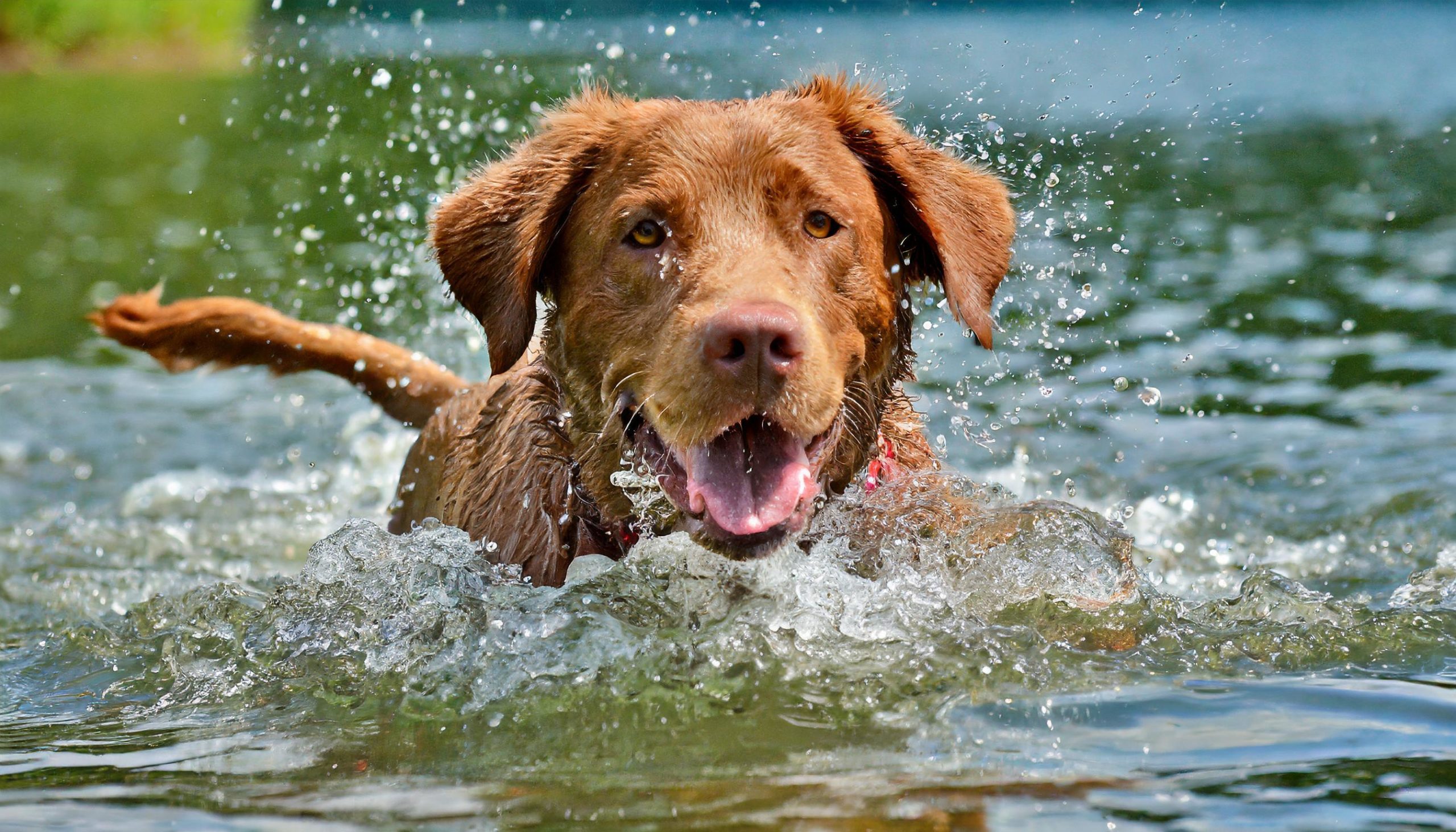
How is it getting along with children?
The Chesapeake Bay Retriever is known for its loyal and protective nature, which generally makes it a good companion for families with children. This breed is patient and can be very affectionate with members of its family, including young children.
However, as with any dog, it is important to provide supervision during interactions between the dog and children to ensure play does not get too rough and to protect both the dog and the children. Chesapeakes can learn to be gentle and cautious with children, especially if they grow up together from an early age.
Early socialisation and training are crucial to foster positive interactions. It is also important to teach children how to be respectful and friendly with the dog, such as avoiding pulling ears or tail and not disturbing the dog while eating or sleeping.
A well-socialised Chesapeake Bay Retriever used to the company of children can be a loyal, protective and playful friend. Its energetic nature also makes it an excellent playmate for active children, as long as activities are safe and supervised.
With proper training and socialisation, the Chesapeake Bay Retriever can become a valuable and beloved member of the family.
Benefits of a Chesapeake Bay Retriever
- Loyalty and Protection: Chesapeakes are extremely loyal to their families and naturally protective, which makes them excellent guard dogs.
- Strong and Energetic: This breed is suitable for active families or individuals who like to be outdoors. They love swimming, walking and other physical activities.
- Intelligence: Chesapeakes are intelligent and can learn quickly, which makes them suitable for training and various dog sports.
- Versatility: They are versatile, both as working dogs for hunting and retrieving and as companion dogs.
Disadvantages of a Chesapeake Bay Retriever
- Requires Lots of Exercise: This breed needs lots of exercise daily, which can be a challenge for busy owners.
- Strong Will: Their intelligence comes with an independent nature, which can make training challenging at times.
- Care: Their thick coat requires regular maintenance, especially after swimming sessions, to keep the coat in good condition.
- Reservedness: Chesapeakes can be reserved towards strangers and need strong socialisation to avoid excessive reticence or protective behaviour.
Life expectancy
The Chesapeake Bay Retriever is a robust and resilient breed with an average life expectancy of about 10 to 13 years. As with many medium- to large-sized dog breeds, the lifespan of individual Chesapeakes can vary based on a number of factors, including genetics, lifestyle, nutrition and the quality of veterinary care.
Price of a Chesapeake Bay Retriever
Price Range: $1,500 – $3,000
Factors Affecting Price:
- Breeder Reputation: Puppies from reputable breeders who focus on health clearances and superior bloodlines are more expensive.
- Pedigree: Purebred Chesapeake Bay Retrievers with registration from the American Kennel Club (AKC) will cost more than those without registration.
- Location: Prices may be higher in regions with a higher cost of living.
- Age: Adult dogs are usually less expensive than puppies.
- Purpose: Dogs bred for specific roles like hunting or competition tend to be pricier than those meant purely as companions.
How to Find a Chesapeake Bay Retriever:
- Breeders: Seek breeders affiliated with the Chesapeake Bay Retriever Club of America. They uphold responsible breeding standards and can guide you to reputable breeders.
- Rescue: Adopting from a shelter or rescue organization is a cost-effective alternative. The National Chesapeake Bay Retriever Rescue Association can direct you to rescues.
Before Bringing Home a Chesapeake Bay Retriever:
- Research Thoroughly: Chesapeakes are dynamic, smart dogs with a pronounced hunting drive. Confirm this breed matches your lifestyle.
- Consider Adoption: Adopted Chesapeakes can become excellent pets, offering a second chance at a happy life.



